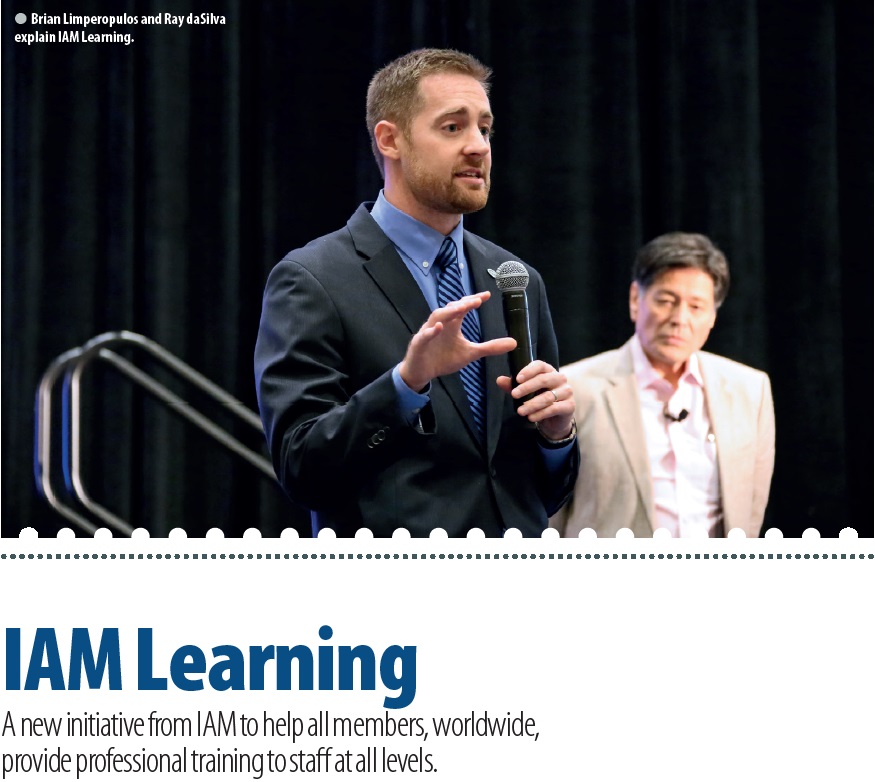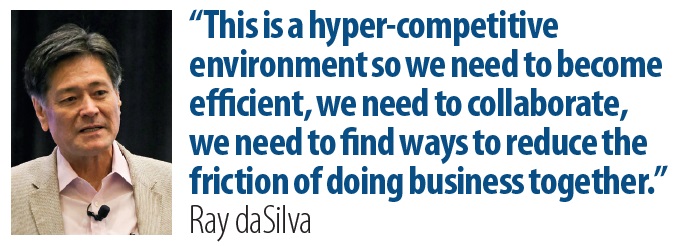IAM Learning is a new initiative from IAM to help all members, worldwide, provide professional training to staff at all levels.

Ray daSilva, President Mobility Exchange LLC and Brian Limperopulos, Vice President of IAM presented an introduction to IAM’s new professional development programme, IAM Learning during the October conference.
Brian explained that the initiative had resulted from the IAM member needs survey in 2017 that identified a general need for more training opportunities, especially from smaller companies that do not have the resources or staff for full-scale staff development.
Ray said that smaller companies are often reluctant to train staff as it’s expensive and they are concerned that staff will leave anyway. He said that this leads on to bad habits which creates service failures that management has to spend time resolving leaving even less time for staff training. “It’s a vicious cycle,” he said. The IAM Learning programme has been designed to be easily accessible and inexpensive to help break that cycle and create greater professionalism throughout the industry.
IAM has now completed its first online training programme that is now available for all IAM members to use. This first course is for move coordinators and is designed to give new employees a basic introduction to the world of international moving right from the ground up. It’s accessed through the IAM Mobility Exchange and there is a link on the IAM website. For a small fee, users are able to select individual courses or bundles of courses to suit their requirements. The modules are: An introduction to move coordination; Initiation and needs analysis; The move plan; An introduction to transport and forwarding; Managing service partners; and a review and final assessment. A certificate of achievement will be issued after completing the training programme.
Brian explained that IAM has formed a Professional Development Committee as a permanent part of IAM’s leadership group. He said that it was just the first step and that the programme would be developed to cover a wide range of subjects over time.
 As an example, Ray demonstrated how some members of the industry handle telephone enquiries, suggesting that this was an area that was seriously in need of improvement. He played some real examples in which potential customers were ignored, required to press numerous buttons, asked to hold, asked to call back and passed around. “The telephone is our shop front,” he said.
As an example, Ray demonstrated how some members of the industry handle telephone enquiries, suggesting that this was an area that was seriously in need of improvement. He played some real examples in which potential customers were ignored, required to press numerous buttons, asked to hold, asked to call back and passed around. “The telephone is our shop front,” he said.
“In future we can develop live sessions and webinars in addition to the online courses,” said Ray. “We will use outside agencies and partners to help teach our people. We want to help take some friction out of doing business with each other and create some efficiency.”
Brian said that the programme would be synchronised with the PCG to make sure the training matches the guidelines and that anything that comes from the training is built into the PCG. “This means that everyone will know that the people they work with worldwide are working to the same standards.” He also said that all IAM staff would go through the same training so that they have a better understanding of the industry they serve.
In closing, Ray said that it is important to break the vicious cycle. “We can continue to hide our cards behind competitive advantage or we can finally say, enough is enough,” he said. “This is a hyper-competitive environment so we need to become efficient, we need to collaborate, we need to find ways to reduce the friction of doing business together. There are times when we should put down competitive advantage and demand that your association works with the other associations for the benefit of everyone. When we contribute to something that becomes available to the whole group, we all benefit.”
Ray and Brian said that the IAM Learning initiative was in its very early stages and it was up to the members to use it and to suggest ways in which it could be improved. The concept was very well received by those in the room however, as Ray was keen to point out, most IAM attendees were not present, preferring to chase one-to-one meetings rather than work on their business development in a broader way. It would be up to those people present to spread the word about IAM Learning to allow it to flourish.
Click here to read the next editor's pick.